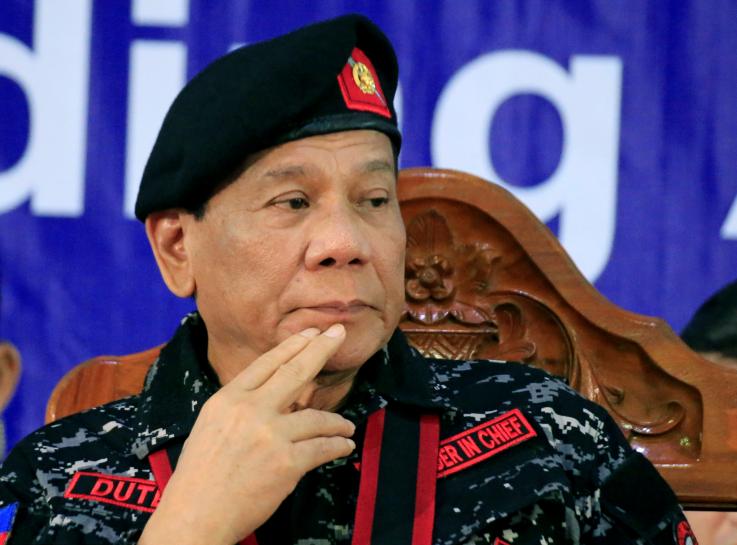Philippine President Rodrigo Duterte once again extended the Visiting Forces Agreement (VFA) with the United States after flip-flopping on the issue twice this year. The Trump Administration missed the chance to call Duterte’s bluff and end the one-sided agreement. When the time comes, the Biden Administration shouldn’t make the same mistake.
Duterte criticized the United States’ decades-long military presence in February and called for the abrogation of the VFA. The VFA has allowed U.S. troops to easily move in the Philippines for 20 years now to honor the 1951 Mutual Defense Treaty between the two countries. When asked about Duterte’s decision to end the VFA, President Trump responded, “I really don’t mind…We’ll save a lot of money.” However, Duterte changed his mind in June after the State Department approved the potential sale of military helicopters to the Philippines, despite Trump’s seemingly indifferent response. Now, Duterte wants to extend the VFA even longer, a sentiment national security adviser Robert O’brien expressed during his recent visit to the Philippines.
Duterte originally claimed he wanted the Philippines to strengthen its own defenses and that China was not a threat. Duterte suggested that he was warming up to China, even calling China a friend during a point of heightened tension in the South China Sea. After taking office in 2016, Duterte declared he wanted all foreign troops out of the Philippines by 2022, and he would not replace them. But in July 2019, Duterte did not hesitate to nudge the United States closer to war with China to defend Philippine territorial claims in the South China Sea.
Duterte’s criticism of the U.S. presence was clearly a bluff and posturing for his domestic base. Philippine Foreign Secretary Teddy Loscin Jr. tweeted in February an implication that the abrogation of the VFA was an opportunity to renegotiate a better deal between America and the Philippines. Duterte is not actually interested in U.S. troops leaving the Philippines, but rather keeping them between himself and China while using them as a punching bag all the same to gain political points with his domestic base.
When the United States and the Philippines negotiated the Mutual Defense Treaty, the international threat landscape was drastically different. The United States was entering a Cold War with the Soviet Union, the Korean War was in full force, and a communist China had just defeated the Nationalists and expelled them from mainland China. Those threats no longer exist. There are no vital U.S. national security interests at risk in the Philippines.
Proponents of a U.S. military presence in the Philippines argue that American troops balance against a rising China. In reality, the forces’ presence does little to contain China and increases the likelihood of dragging the United States into conflict in the region. The United States is fighting for its ability to control the Asian-Pacific sphere of influence rather than protecting its vital national security interests.
As for the Philippines, no credible security threat from China exists. Sure there are maritime disputes over rocks, reefs and artificial islands, along with disagreements over natural resources and fishing, but is there any reason to believe China is plotting a full-scale military invasion of the Philippines? Of course not. China has actually helped combat the ISIS uprising in Marawi, where U.S. troops are also operating. If interventionists had it their way, one would believe China poses an existential threat and the United States is the only thing protecting Philippine sovereignty.
Most of the U.S. forces’ activity stems from Operation Enduring Freedom-Philippines, part of the larger Global War on Terror. American troops primarily perform security force assistance (SFA), training and assisting Philippine security forces to address terrorist threats. However, the efficacy and cost-benefit ratio for the United States do not justify a continued presence. In some instances, the United States can help alliance militaries improve quickly to address immediate threats. But decades-long SFA activities in the Philippines should have created a competent Philippine military by now, equipped to handle its own threats. The SFA strategies should not be indefinite programs. Furthermore, there is no consensus on the efficacy of foreign militaries’ abilities to stabilize weak states through SFA.
The reality is that Duterte’s brutal regime receives U.S. assistance to crack down on its own citizens while Americans get a false sense of security from supposedly curbing Chinese influence. From 2016 to 2019, the United States gave $550 million in military assistance to the Philippines, including a recent gift of $29 million worth of defense equipment. Meanwhile Duterte’s regime has created a human rights crisis. The violent “war on drugs” has killed nearly 6,000 drug suspects since 2016, according to Philippine government data. Human rights groups say thousands more have died from extrajudicial killings. Duterte also routinely attacked freedom of the press and political dissidents pre-COVID-19, but the regime took advantage of the opportunity for a power grab by ramming through a new widely criticized Anti-Terror Law. The United States continues to aid the Philippine government despite continued human rights and civil liberties violations.
It’s still unclear how Biden will approach the U.S.-Philippine relationship, but his national security team is shaping up to guarantee a hawkish approach to China. That means the U.S. will keep troops in the Philippines for U.S. power projection in the region. However, Congress can and should reassert its role in foreign policy by using its power of the purse. In September, Democrats in the House sponsored a bill to contingently cut off aid to Philippine military and police unless Duterte made major human rights reforms.
The bottom line is that a U.S. military presence in the Philippines does not serve American interests. The VFA is an example of how the U.S. has over-extended itself with defense commitments in the Asia-Pacific. The Biden Administration may have the unique opportunity to finally end a one-sided defense agreement with a country that is of little security interest and pushes it closer to an unnecessary war in Southeast Asia. Ultimately, the United States must avoid a Cold War mentality and abandon a militarized approach to China and the Asia-Pacific as a whole.































